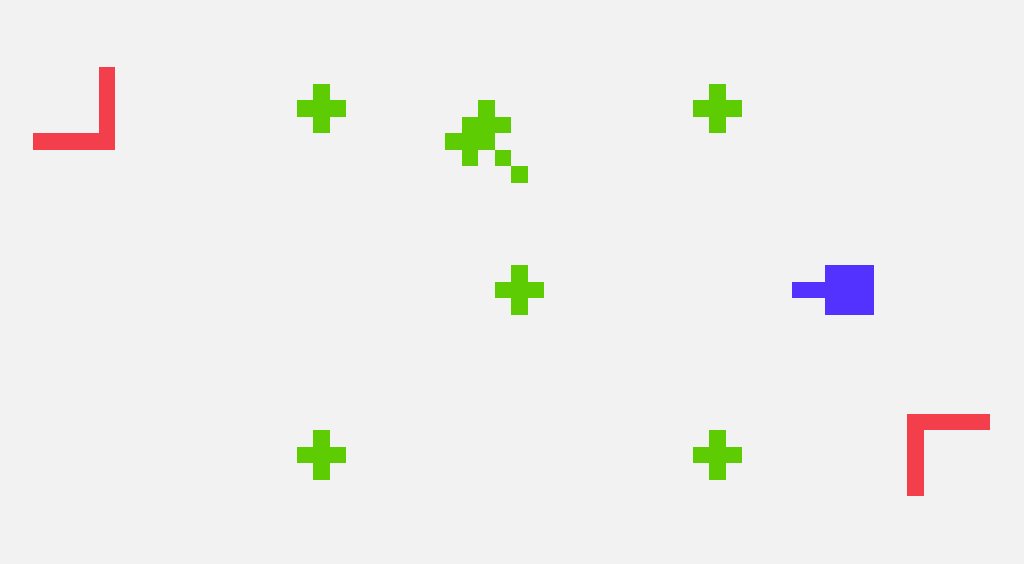
Console Gaming History Adventure: 1976
So I’ve still been figuring out what kinds of things I want to write on here. 🤔 My good friend Voggy suggested I write about what I’m discovering with my little gaming adventure project, and so I think I’ll do just that! This is, after all, something most people don’t have time for and you might like to hear of my experiences!
I’m very interested in video games. Oh yes, they are fun to play! But they are also interesting to look at in the context of interactive art and the human culture that produces it. I haven’t been on the mortal plane for more than a few decades, and the oldest console games I had the chance to play when they were new were for the Nintendo 64. I’ve since gone back and explored a few older games for the NES, Super NES, and some others, but I thought it would be fun to go back even further – to the very beginning, and to watch how both the technology and the cultural biases and ideas that made use of it evolved over time.
So what I’m doing is going through each year of console gaming history and playing all the games from that year that I can get my little demon claws on! That turns out to be nearly every English-friendly game that was released in that year, with only a few holes here and there. I don’t actually have to complete each game – the rule I set for myself is that I only have to poke around with it for a few minutes to see what it’s like. If I find a game is to my taste – fun platformers, scrolling shooters, and so on, then yes, I do finish it! But for things that aren’t so much my thing, like sports games or playing card games, I only poke around just enough to get the idea.
To be clear: I’m only doing this with console games, not computer games! So no MS-DOS, Amiga, or Apple II stuff. Portable consoles also count though! I wasn’t originally planning on sampling the arcade machines, but the early consoles are just so heavily based on and influenced by them that I decided I just wouldn’t have the right context without including the arcade games too! I am able to access the majority of them but I want to keep the emphasis on the consoles. So for each year, I’m only going to spotlight a single arcade game as I talk about how arcade machines were doing that year in the context of how that’s relevant to gaming consoles.
Now obviously, this is wayy too big a thing to ever finish or even get very far on. I’ll probably get bored after completing only a few years and give up on it. But I thought it would be fun to do while it lasts, and maybe it would be fun for others to read about. And so here we go!
Our first year to cover is 1976. That’s not actually when all this starts! The very first home gaming console, the Magnavox Odyssey, made its debut in 1972. But the early gaming consoles didn’t use cartridges, optical discs, downloadables, or any other external source for games. Anything they’d ever be able to play came baked into the console and that was it, and that was usually just one or two titles! They aren’t the sort of thing you could emulate on a modern computer, they aren’t easy to get ahold of on eBay, and nearly all of them are just the same tired two-player-only clones of the game Pong anyway. Game historians call these Generation 1 consoles, and I’m skipping them! Only with Generation 2 consoles and onward do you have a library of separate games to play that don’t come with the console.
New Consoles
I’m going to use this section to introduce any consoles new to the year! Each console is linked to on Wikipedia, and the image of each console will be pulled directly from Wikipedia, with some light editing mostly to give the images a transparent background. The information comes from a mix of sources, including Wikipedia, YouTube review and retrospective videos I’m able to find, information I’m able to Google, and my own personal experiences. I’m not claiming to be an expert but I think some level of explanation is important for context!
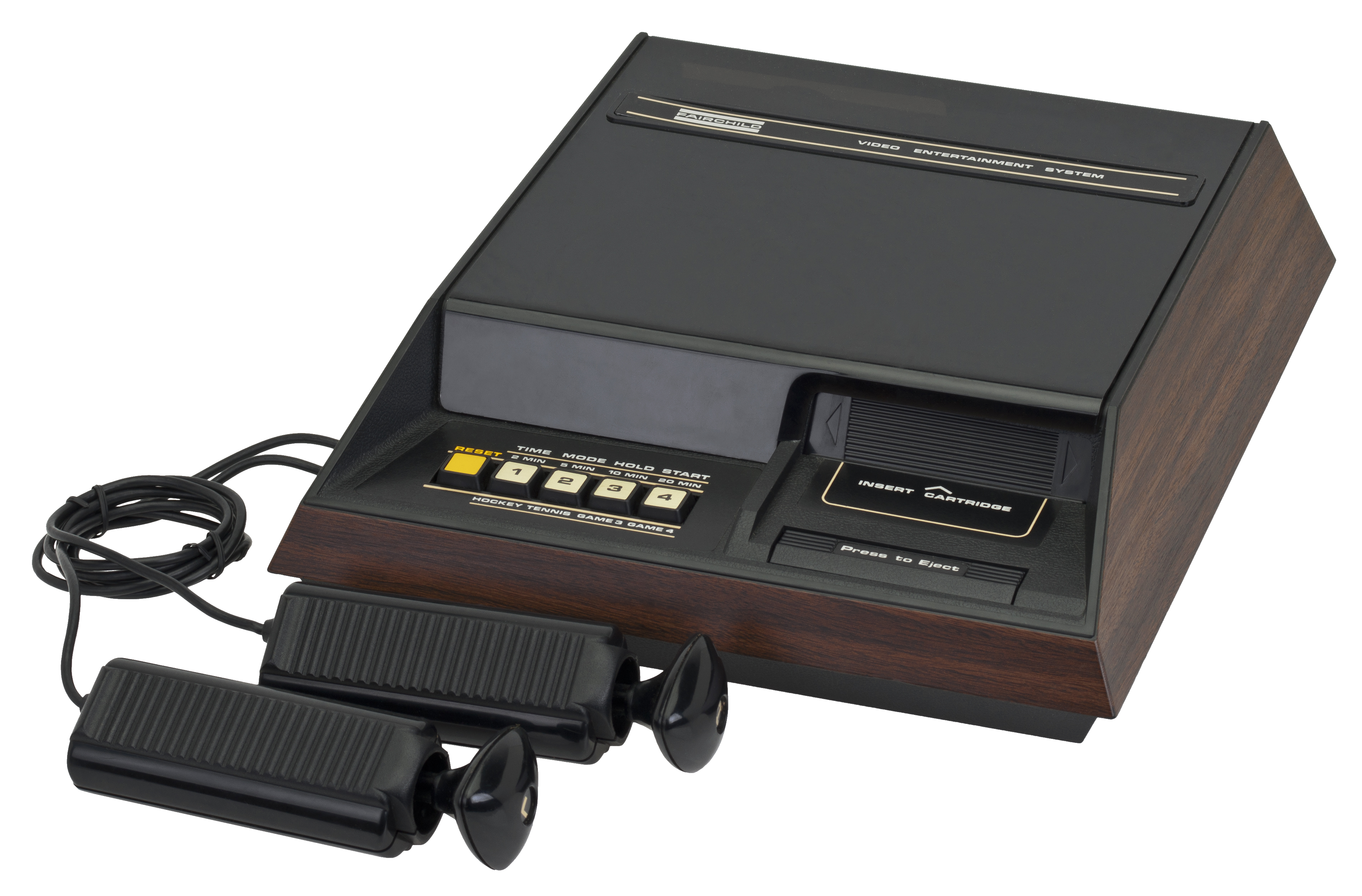 The Fairchild Channel F was the only Gen-2 gaming console you could buy in 1976, and only near the end of the year in November. With a 104×60 effective screen resolution, 8 possible colors (with limitations on when/how they could be used), and only 64 bytes (just 512 1s and 0s) of RAM, the console couldn’t exactly run Crysis. 😐 It was also expensive, with a retail price of 169.95USD (932.88USD in today’s money)! But if you wanted a home gaming console with an expanding library of cartridges back in 1976, this was your only choice. Although it would quickly be outclassed by more powerful consoles, starting with the Atari VCS only 10 months later, the Channel F did still have the advantage of coming with a much more sophisticated controller design than Atari’s offering that was very unique, with its “push” and “pull” actions effectively giving it two possible buttons for game functions to be assigned to (compared to just one with the VCS), and its “twist” action allowing for an extra axis of movement instead of just horizontal and vertical, often used to rotate your player character.
The Fairchild Channel F was the only Gen-2 gaming console you could buy in 1976, and only near the end of the year in November. With a 104×60 effective screen resolution, 8 possible colors (with limitations on when/how they could be used), and only 64 bytes (just 512 1s and 0s) of RAM, the console couldn’t exactly run Crysis. 😐 It was also expensive, with a retail price of 169.95USD (932.88USD in today’s money)! But if you wanted a home gaming console with an expanding library of cartridges back in 1976, this was your only choice. Although it would quickly be outclassed by more powerful consoles, starting with the Atari VCS only 10 months later, the Channel F did still have the advantage of coming with a much more sophisticated controller design than Atari’s offering that was very unique, with its “push” and “pull” actions effectively giving it two possible buttons for game functions to be assigned to (compared to just one with the VCS), and its “twist” action allowing for an extra axis of movement instead of just horizontal and vertical, often used to rotate your player character.
Returning Consoles
I’ll use this section to talk about consoles returning from previous years with new games and what was happening with them at the time!
This year, 1st generation consoles, which could each only play a finite, baked-in number of one or more games, continued to be the main form of console gaming, but that would change quickly!
Noteworthy Games
With this section, I’ll talk about games I consider noteworthy and worth checking out for yourself. That doesn’t always mean the game is good! It could be in this list because I think it’s particularly bad! Or maybe because it has a lot of historical importance, or says a lot about the mood and technology of the games released in the year overall! I will link to the game article on Wikipedia if it exists, but none of the games this year have that.
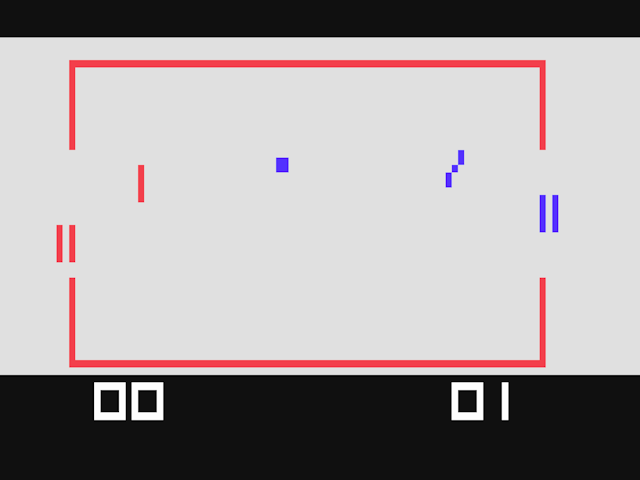 Seeing as Generation 2 games were only available for two months of this year, there isn’t really much to write about. 😐 The Channel F was the first console to support separate games, and in keeping with the norms of the time period where it entered the market, it still came with two built-in games so that you had something to do with it if you didn’t buy any cartridges to put in it. These games were Hockey and Tennis. Both were clearly heavily based on Pong, but Hockey was a much more complex game that took full advantage of all the functions packed into the Channel F controller. In addition to moving up and down and left and right, you can use the controller’s “twist” function to rotate your hockey stick, changing the direction you hit the puck when it touches your stick. There is even a goalie that can be moved up and down with the controller’s “push” and “pull” functions! The game is two-player only, so I wasn’t able to test it properly, but I think it could actually be a lot of fun if unlike me you actually have someone else to play with. 😢 I’m assuming that including the option of even a very simple computer opponent would have been asking too much of the Channel F’s hardware.
Seeing as Generation 2 games were only available for two months of this year, there isn’t really much to write about. 😐 The Channel F was the first console to support separate games, and in keeping with the norms of the time period where it entered the market, it still came with two built-in games so that you had something to do with it if you didn’t buy any cartridges to put in it. These games were Hockey and Tennis. Both were clearly heavily based on Pong, but Hockey was a much more complex game that took full advantage of all the functions packed into the Channel F controller. In addition to moving up and down and left and right, you can use the controller’s “twist” function to rotate your hockey stick, changing the direction you hit the puck when it touches your stick. There is even a goalie that can be moved up and down with the controller’s “push” and “pull” functions! The game is two-player only, so I wasn’t able to test it properly, but I think it could actually be a lot of fun if unlike me you actually have someone else to play with. 😢 I’m assuming that including the option of even a very simple computer opponent would have been asking too much of the Channel F’s hardware.
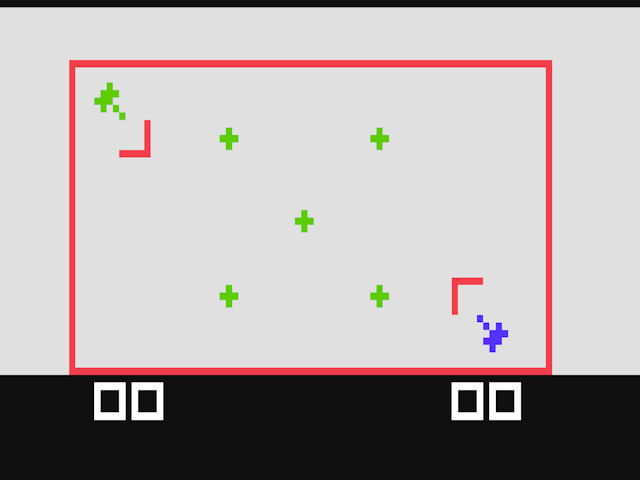 Most of Channel F’s early cartridges, which it called “Videocarts”, came with more than one game on them, and each Videocart had a number by order of release. Another good game I think is worth checking out is Desert Fox, which is found on Videocart-2. Clearly based on a number of similar arcade games, Desert Fox has you battling it out with another tank, trying to avoid the mines all over the course as you shoot at your opponent. You start behind these red walls in the corners that can serve as cover for your enemy’s attacks. Like with Hockey, this game is an excellent showcase of what the Channel F controller is capable of with very flexible freedom of movement for the tanks. Unfortunately, also like Hockey, it requires you to have an in-person friend to play it with. 😭
Most of Channel F’s early cartridges, which it called “Videocarts”, came with more than one game on them, and each Videocart had a number by order of release. Another good game I think is worth checking out is Desert Fox, which is found on Videocart-2. Clearly based on a number of similar arcade games, Desert Fox has you battling it out with another tank, trying to avoid the mines all over the course as you shoot at your opponent. You start behind these red walls in the corners that can serve as cover for your enemy’s attacks. Like with Hockey, this game is an excellent showcase of what the Channel F controller is capable of with very flexible freedom of movement for the tanks. Unfortunately, also like Hockey, it requires you to have an in-person friend to play it with. 😭
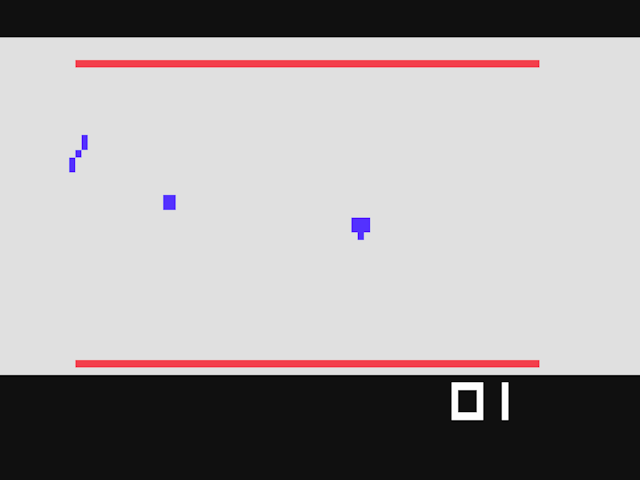 The only other 1976 game I think might be worth a gander is Shooting Gallery which, not counting the doodle utility, is the only actual game of 1976 you can even play by yourself. 😐 Shooting Gallery is actually found on two different Channel F cartridges: Videocart-1 and Videocart-2, and as far as I can tell, both versions seem to play the same. In Shooting Gallery, your firing paddle is placed at a different fixed angle and position each round, and you need to time your shot so that the moving target is hit when the bullet bounces on over to it. This can be a surprisingly fun challenge and reminds me a bit of some modern games I’ve seen for smartphones!
The only other 1976 game I think might be worth a gander is Shooting Gallery which, not counting the doodle utility, is the only actual game of 1976 you can even play by yourself. 😐 Shooting Gallery is actually found on two different Channel F cartridges: Videocart-1 and Videocart-2, and as far as I can tell, both versions seem to play the same. In Shooting Gallery, your firing paddle is placed at a different fixed angle and position each round, and you need to time your shot so that the moving target is hit when the bullet bounces on over to it. This can be a surprisingly fun challenge and reminds me a bit of some modern games I’ve seen for smartphones!
All-in-all, there were a grand total of only 7 possible Generation 2 games or other programs you could have owned back in 1976: 2 baked into the Channel F console plus 5 more spread across 3 different Channel F cartridges. So there’s not much to talk about specific to this year.
Meanwhile, in Arcade Land…
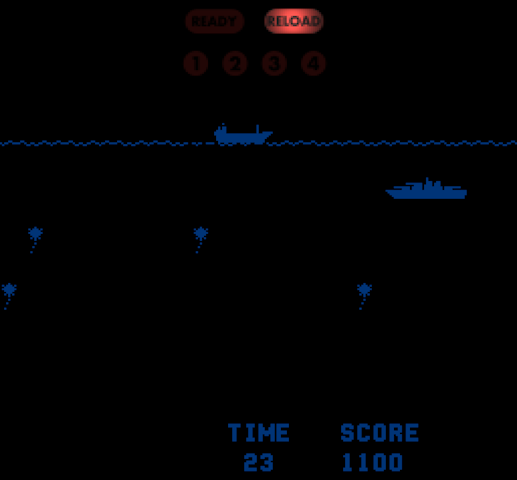 Back in 1976, arcade machines, while still in their infancy, were definitely where most of the fun was at! Since they were marketed to business establishments, they weren’t subject to the same budget constraints, and could be a lot more powerful, with more realistic sound effects and overwhelmingly higher display resolutions. The games were in black and white, which I’m guessing is because of the expense involved in including a color CRT display in an arcade unit just for playing a single game, but they often had physical backdrops the game graphics could be projected on top of, or colored overlays that could be put on the screen, to add some zest to the otherwise non-existent coloring of the game! Pictured is a game called Sea Wolf, which is all about carefully timing shots in order to destroy ships, while avoiding the mines in your way. You have unlimited torpedoes, but have to wait a moment to reload for every 4 you fire. Different ships give you more points depending on how hard they are to hit, and you have a limited time to see how high a score you can get! There is a little pretend periscope to look through to play the game which I think is a really cute idea!
Back in 1976, arcade machines, while still in their infancy, were definitely where most of the fun was at! Since they were marketed to business establishments, they weren’t subject to the same budget constraints, and could be a lot more powerful, with more realistic sound effects and overwhelmingly higher display resolutions. The games were in black and white, which I’m guessing is because of the expense involved in including a color CRT display in an arcade unit just for playing a single game, but they often had physical backdrops the game graphics could be projected on top of, or colored overlays that could be put on the screen, to add some zest to the otherwise non-existent coloring of the game! Pictured is a game called Sea Wolf, which is all about carefully timing shots in order to destroy ships, while avoiding the mines in your way. You have unlimited torpedoes, but have to wait a moment to reload for every 4 you fire. Different ships give you more points depending on how hard they are to hit, and you have a limited time to see how high a score you can get! There is a little pretend periscope to look through to play the game which I think is a really cute idea!
Conclusion
1976 is a bit of a “stump year” for this project without much to talk about. 1977 is a good bit better, with two, possibly three new gaming consoles to add to the list (more on that later) and a lot more content to look at. Since I made the decision to document all this late, I’m already at 1979 at the time of this writing. I should be able to get out an article on 1977 soon, but please let me know how you think I did with all this in the comments!